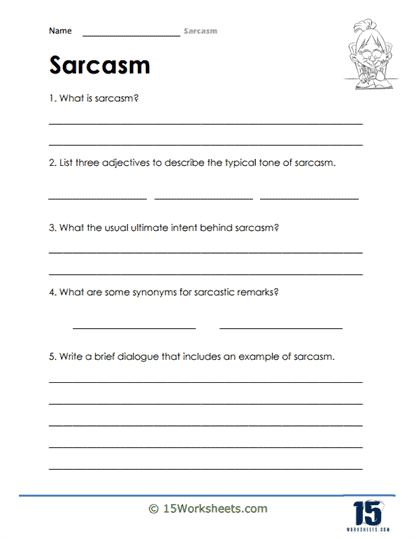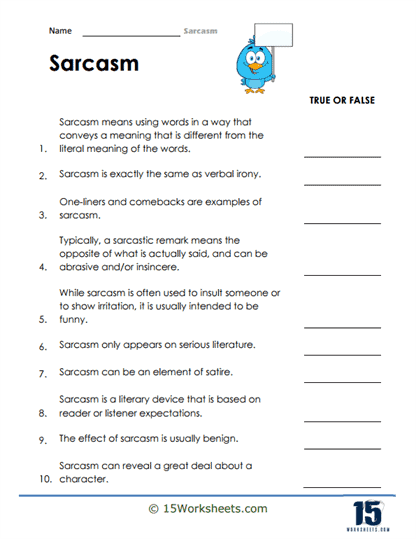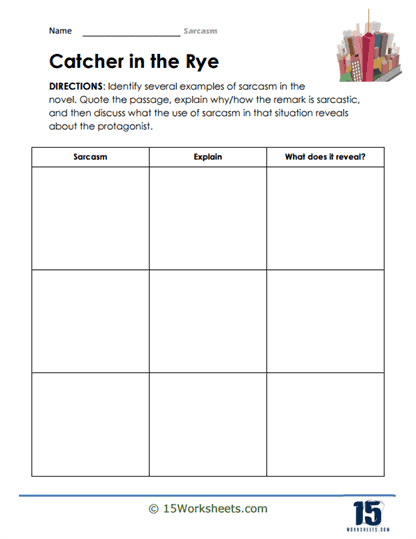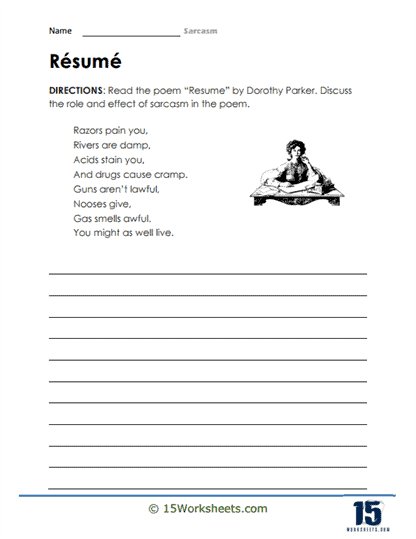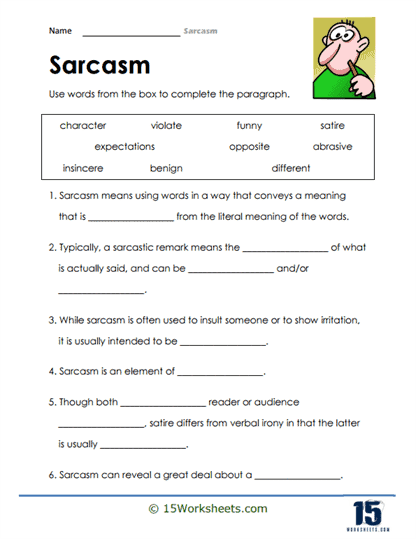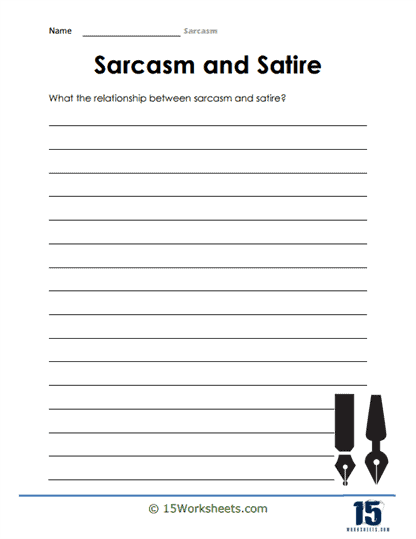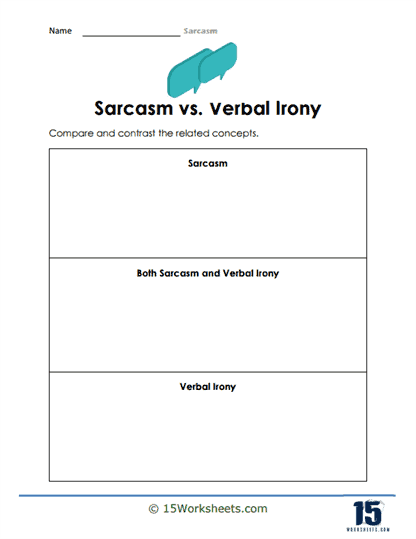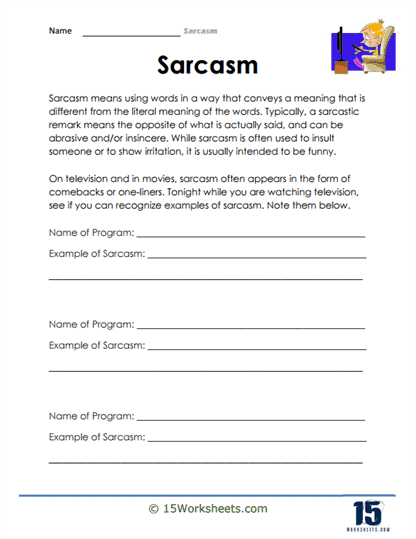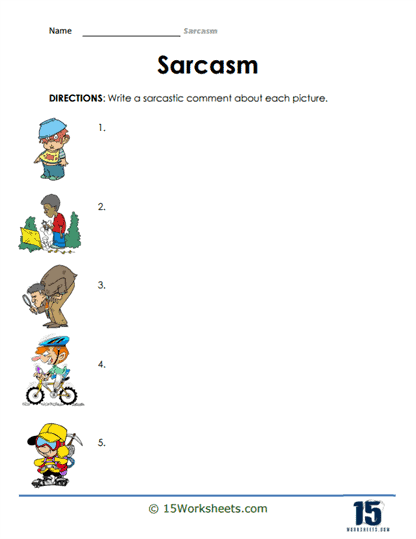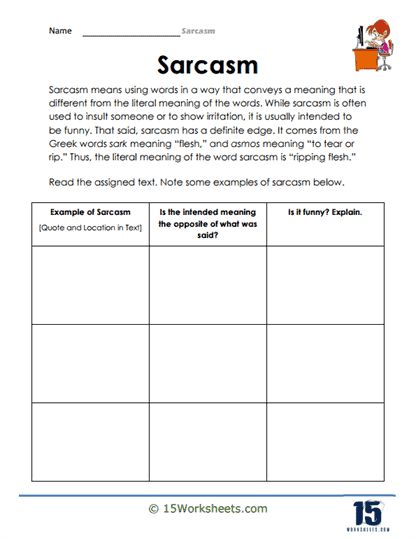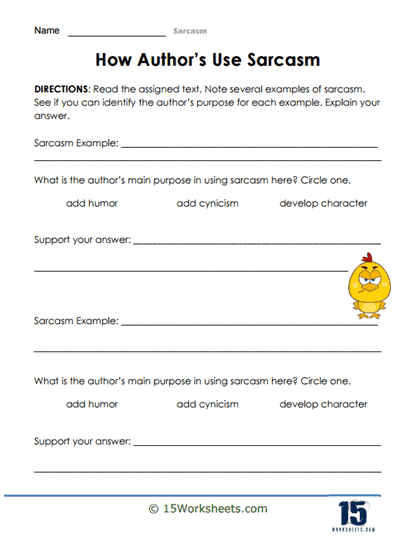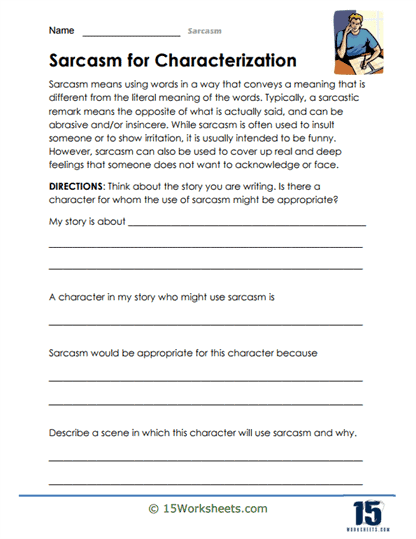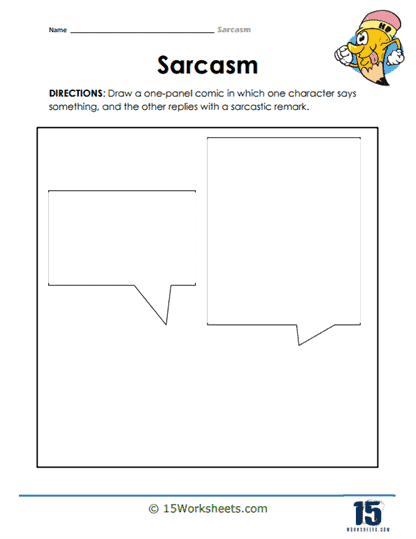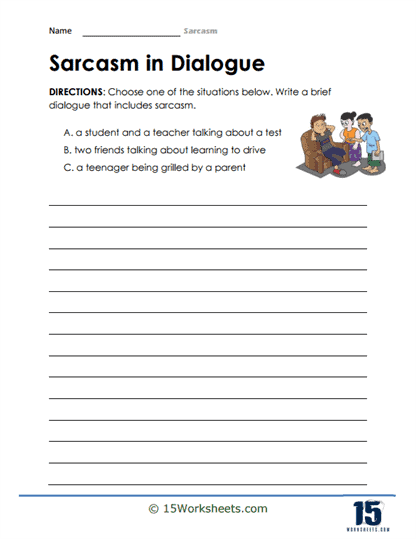Sarcasm Worksheets
All About These 15 Worksheets
Sarcasm, the use of irony to mock or convey contempt, is a prevalent form of humor and communication in our society. Understanding sarcasm is not only important for social and cultural literacy but also for fostering effective communication, critical thinking, and emotional intelligence. This collection of 15 worksheets is designed to introduce students to the world of sarcasm, helping them grasp the importance of this complex form of expression, recognize its various forms, and develop their own sarcasm comprehension and usage skills.
What Are Sarcasm Worksheets?
Sarcasm is a form of verbal irony that’s often used to express contempt or ridicule. It is a complex language device and can be challenging for some students to recognize and understand, especially as it often depends heavily on context, tone, and understanding of the speaker’s intent.
Here’s what you might find in these worksheets:
Definition and Identification – Initial exercises would likely focus on defining sarcasm and differentiating it from straightforward statements. The worksheets might include a mixture of sarcastic and non-sarcastic statements, and students would have to identify which is which.
Understanding Tone and Context – Because sarcasm relies so much on tone and context, some exercises would focus on these aspects. These might include short paragraphs or dialogues where students have to identify sarcastic remarks.
Creating Sarcasm – Once students have learned to identify sarcasm, they could move on to creating their own sarcastic statements. This would help them understand how context and tone can change the meaning of a statement.
Sarcasm in Literature – The worksheets might also include excerpts from literature where sarcasm is used. Students would have to identify the sarcasm and discuss how it contributes to the character development or the overall narrative.
Understanding Intent – Some exercises might focus on why people use sarcasm – to be humorous, to criticize, or to express frustration, among others. This can help students understand the wide range of emotions and intentions that sarcasm can convey.
It’s important for students to understand sarcasm as it’s frequently used in literature, media, and everyday conversation. Recognizing sarcasm can also enhance their social communication skills, as they’ll better understand the intentions behind people’s words.
What is the Literary Device of Sarcasm?
Sarcasm is a form of verbal irony that’s typically used to mock or convey contempt. Its primary intent is to hurt or amuse. The word sarcasm comes from the Greek word “sarkazein,” which literally means “to tear flesh.” Despite its somewhat violent etymology, sarcasm is an everyday part of speech and humor for many people, and a versatile tool for authors.
Defining Features of Sarcasm
Sarcasm’s primary feature is its biting, often hurtful form of humor or criticism. Sarcasm usually involves stating the opposite of what is meant in a way that makes this clear. A sarcastic statement often has a tone of contempt, ridicule, or mock praise. Sarcasm can often be identified by its tone, but in written language, it relies on context for its meaning to be clear.
How Authors Use Sarcasm
Authors use sarcasm as a literary device for a variety of reasons. One of the main reasons is to provide humor. By making light of a situation, authors can engage readers and keep them interested in the story. Sarcasm also allows authors to critique individuals, situations, or society in a sharp, direct manner. It can add depth to characters, showing their intelligence, wit, or bitterness. Sarcasm can also create dramatic irony, providing the audience with knowledge that the characters may not have.
Examples of Sarcasm in Literature
Pride and Prejudice by Jane Austen
Jane Austen was known for her use of irony and sarcasm in her novels. In “Pride and Prejudice,” the protagonist, Elizabeth Bennet, often uses sarcasm as a form of wit. An example of this is when she says, “Mr. Darcy is all politeness,” after he snubs her at a dance. Her statement is the opposite of what she means, reflecting her hurt feelings and negative opinion of Mr. Darcy.
Catcher in the Rye by J.D. Salinger
The main character, Holden Caulfield, uses sarcasm extensively as a coping mechanism and to express his discontent with society. One example is when he says, “I’m the most terrific liar you ever saw in your life. It’s awful. If I’m on my way to the store to buy a magazine, even, and somebody asks me where I’m going, I’m liable to say I’m going to the opera. It’s terrible.” His sarcastic self-deprecation exposes his inner turmoil and alienation.
To Kill a Mockingbird by Harper Lee
Harper Lee uses sarcasm to expose the racial prejudices in the society she describes. An instance is when Atticus Finch says to his brother, “Why reasonable people go stark raving mad when anything involving a Negro comes up, is something I don’t pretend to understand.” Here, Atticus uses sarcasm to express his dismay at the community’s irrational racism.
Benefits Of Sarcasm Worksheets For Students
Exploring the world of sarcasm through this collection of 15 witty worksheets offers students an opportunity to develop essential skills in social literacy, effective communication, critical thinking, emotional intelligence, and cultural awareness. Sarcasm is a versatile form of expression that challenges students to navigate the complexities of humor, irony, and tone in language.
By engaging with these exercises and activities, students not only enhance their academic abilities but also gain valuable tools for deciphering and using sarcasm effectively in their personal and professional lives. The benefits of studying sarcasm extend far beyond the classroom, empowering students to be more socially adept, witty, and culturally sensitive communicators in an increasingly diverse and humorous world.

